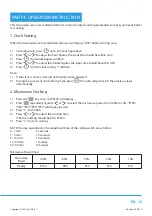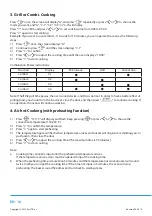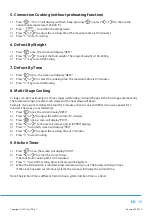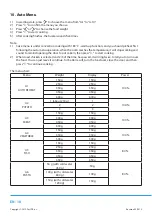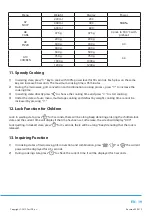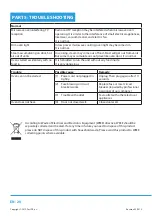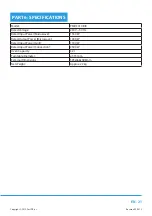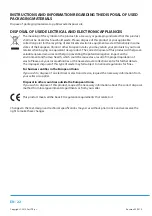
Copyright © 2019, Fast ČR, a. s.
Revision 09/2019
EN - 7
Utensils
Personal Injury Hazard
It is hazardous for anyone other than a competent person to carry
out any service or repair operation that involves the removal of
a cover which gives protection against exposure to microwave
energy.
See the instructions on “Materials you can use in microwave oven or to be avoided in microwave oven.” There
may be certain non-metallic utensils that are not safe to use for microwaving. If in doubt, you can test the
utensil in question following the procedure below.
Utensil Test:
1. Fill a microwave-safe container with 1 cup of cold water (250ml) along with the utensil in question.
2. Cook on maximum power for 1 minute.
3. Carefully feel the utensil. If the empty utensil is warm, do not use it for microwave cooking.
4. Do not exceed 1 minute cooking time.
Materials you can use in microwave oven
Utensils
Remarks
Browning dish
Follow manufacturer’s instructions. The bottom of browning dish must be
at least 3/16 inch (5mm) above the turntable. Incorrect usage may cause
the turntable to break.
Dinnerware
Microwave-safe only. Follow manufacturer‘s instructions. Do not use
cracked or chipped dishes.
Glass jars
Always remove lid. Use only to heat food until just warm. Most glass jars
are not heat resistant and may break.
Glassware
Heat-resistant oven glassware only. Make sure there is no metallic trim. Do
not use cracked or chipped dishes.
Oven cooking bags
Follow manufacturer’s instructions. Do not close with metal tie. Make slits
to allow steam to escape.
Paper plates and cups
Use for short–term cooking/warming only. Do not leave oven unattended
while cooking.
Paper towels
Use to cover food for reheating and absorbing fat. Use with supervision for
a short-term cooking only.
Parchment paper
Use as a cover to prevent splattering or a wrap for steaming.

















